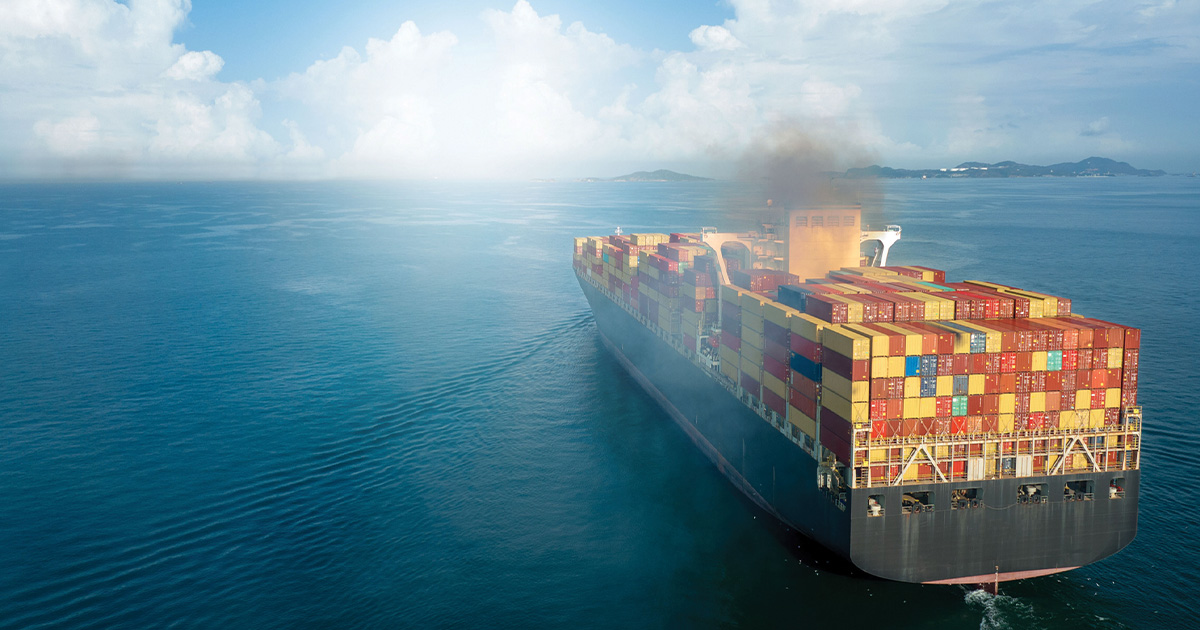A new paper, led by Plymouth Marine Laboratory with partners at exactEarth Europe Ltd and TNO, has highlighted possible solutions to help improve ship emission compliance and attribution.
A number of new regulations have been implemented by the International Maritime Organisation (IMO) over the last decade following global concerns over air quality. Emissions of sulphur dioxide and nitrogen oxides from ships have been limited in ‘emission control areas’, where areas of high shipping activity are in close proximity to coastal regions with high populations, such as northwest Europe and the eastern seaboard of the USA.
Any legislation needs to have a robust and rigorous monitoring program to ensure compliance and prove attribution to individual vessels. Current compliance is measured by inspection of logbooks and fuel samples taken in port, which is time-consuming and costly. Some innovative techniques, such as ‘sniffer’ drones, are being trialed but are unlikely to meet the scale of coverage needed and in-port inspections are still needed to meet legislative compliance standards.
As the global population and ship-based trade increases, without enforceable regulations, the impact of SO2and NOX pollution is expected to be exacerbated further.
SO2 is linked with several adverse health effects and poses a particularly high risk to children, the elderly and those with respiratory issues, such as asthmatics. Likewise, NOx can cause breathing issues, as well as headaches and irritation to the skin and eyes.
In order to meet the challenge of global compliance and identification, the ship emission monitoring network needs to expand significantly so it has the capacity to cover all locations where there is shipping activity, around the clock. However, there are clear obstacles to achieving full coverage: prohibitive expense and technical capability.
The team’s recommended concept builds on two widely accessible technologies of low-cost portable gas analyzers, designed to measure automobile engine exhausts, and satellite based Automatic Identification Systems (S-AIS). By combining these technologies with devices that already transmit ship locational data via S-AIS, the approach has the potential to cover 100% of the global ocean whilst also being able to attribute emissions to individual ships in real-time.
Lead author and PML’s Head of Science for Marine Biogeochemistry and Observations, Dr. Tim Smyth, commented:
“By utilizing the additional data carrying capacity of on-board satellite automatic identification systems (S-AIS), we demonstrated all three facets of faster, better and cheaper for emissions monitoring: faster with the real-time reporting of data, with message rates of 4–10 per hour even in radiofrequency-congested regions such as the Baltic and English Channel; better in that the emissions are measured at source within the stack of a vessel, and that those emissions can be uniquely identifiable by a ship’s Maritime Mobile Service Identity (MMSI); and cheaper in that the emissions sensors, together with the S-AIS telemetry system, maintenance and other costs, are in the order of 100–1000 EUR (whereas previous approaches to this either rely on expensive scientific laboratory grade equipment, monitoring stations over bridges, or drones).
"We argue that our approach is suitable for the IMO and national regulatory authorities solving the atmospheric shipping emission compliance and attribution conundrum.”





